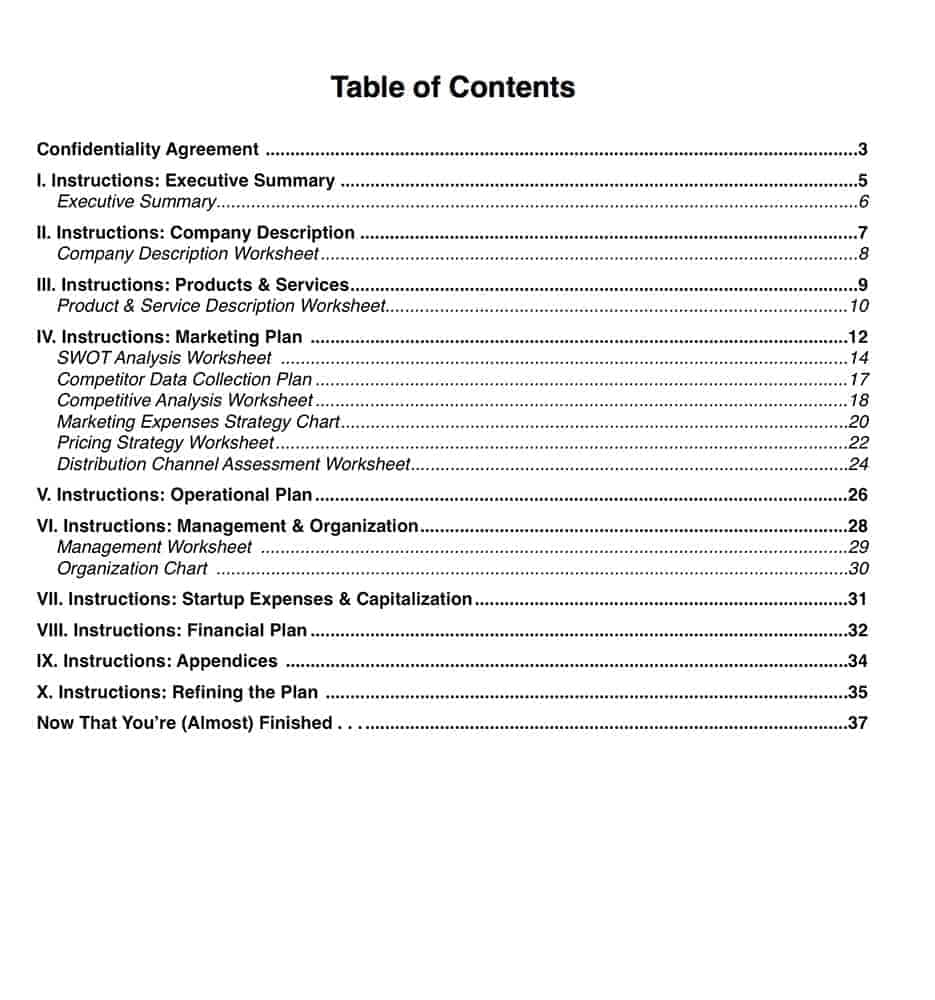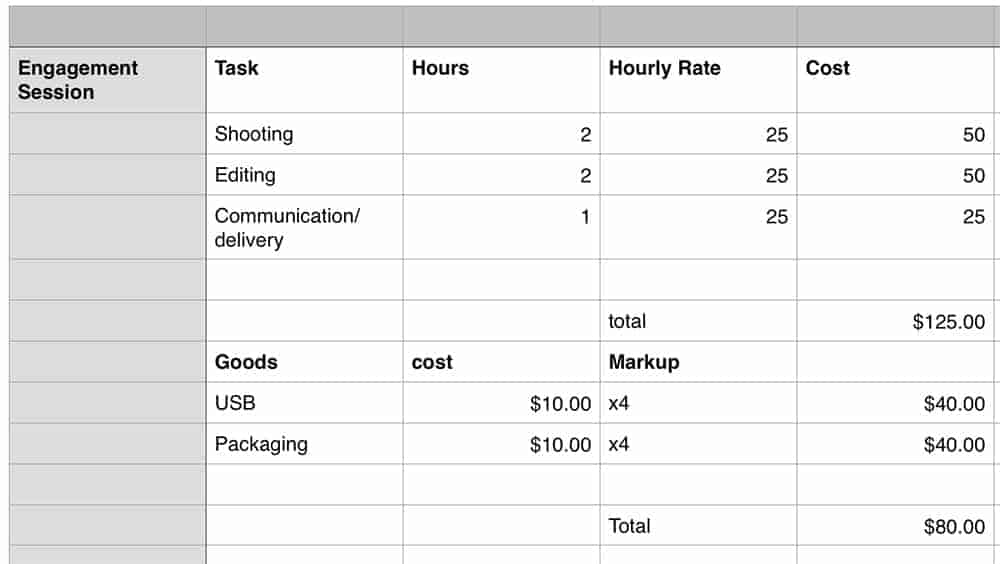There’s a well known saying that can describe photographers: starving artist. It’s tough being a photographer and most photographers are part time because they either can’t make enough money or are afraid to go full time. Why is that though? Why can’t becoming a professional photographer be as realistic as becoming a teacher or owning a coffee shop? There are a ton of factors that play into that answer, but I think I know one of the major ones: lack of business skills. Think about it, do people become photographers because they love business or because they love taking pictures? That’s what is hurting so many photographers; they simply don’t know how to run a business. I’ve struggled with this, and I’m still struggling with it, but I have learned a few things over the years. Let’s look at 5 Tips to Run your Photography Business like a Business.
1. Create a Business Plan
If you go to business school (which practically no photographer does), you’ll learn that before you go and start a business, you need a business plan. This is a guide that lays out everything for the business and will help with planning and predicting if the business will be profitable. There are plenty of places to find free business plan templates on the internet. Some are much more detailed than others, but the point is you are being strategic about your business before you dive in. A few things to consider would be things like the Name of Business, Main Competition, Legal Structure of Business, Products/Services, and Expenses. Let’s look at a few items that are really important that we tend to overlook.
Mission Statement and Philosophy
It’s important to know what you value for your business. What is it you stand for? How do you want to run your business? It’s important to understand these ideas and to write them out. These ideas will be the guiding force for your business. If you claim to care about customer service, everything you do will be aimed at that. If you care about delivering an amazing product, you won’t ever settle for mediocre.
What makes you different?
Photography has become extremely popular and with that there are now hundreds of photographers in every area. This can make it hard for you to be successful. One way to win more customers is to know how you are different from the rest. What is it that makes you special and so much better than the others? What can only you offer? When you can share this with clients, they no longer just look at price, and they will choose you over everyone else.
Target Market
For some reason, photographers think they should work with everyone. This is not true! If you try to reach and serve everyone, you will fail. You need to decide who your perfect customer is, and try to reach that person. You might be looking for a certain age group, income, interests, or a ton of different things.
Goals for next few years
It’s important to set goals for your business. Start with a goal for your first year, and then what do you want to happen by year 5? This gives you something to aim for and a way to evaluate yourself. The goals could be financial or maybe centered around the amount of new customers. You might even create several different goals for different areas of your business.
Barriers to Entry/ Threats and Opportunities
Life is not all rainbows and unicorns. Starting a business is tough, and there are things that will get in your way. Start off by planning for these things. Are you going to need a lot of money up front for equipment and other necessities? Are there too many photographers already doing what you’re doing? Are there any things out there that could hurt or stop your business? I know that sounds negative, but it’s good to look at the problems before you start.
The other side is also true. Look for the positives. Are there any areas that are untapped that you could jump into? Maybe you have connections at several different schools and you could give a more personalized touch than the big school photography companies. Maybe no one is doing pet photography in your area. Opportunities are there, you just have to find them.
2. Pricing for Photographers
Pricing has to be one of the hottest topics in photography. People are always wanting to know what to charge, what to offer, and how to go about the whole process. As artists, it’s so hard to put a price tag on what we do, so that causes a lot of fear and even guilt. I’m not here to tell you what to charge, but if you are wanting to run a real business, you have to have a real strategy for your pricing.
I can’t remember when I started charging for photography, but I do remember having no clue about pricing. Honestly, I loved photography, so I was so pumped about making any money. At first I just threw together some random packages with no real consideration except that as I added more things I needed to charge more. I, like many of you, though, wasn’t charging nearly enough. I remember when someone hired me to shoot their wedding for $1,000. At that point, it was my highest package, and I was so pumped. Now I look back at it and laugh a little, but I’m also a little disgusted for charging so little for so much work. For that $1,000, I gave them an engagement session, a bridal session, unlimited wedding day coverage with two photographers, and an album. I know, stupid. In the end, I was probably making $2 an hour or less.
When you start figuring out prices, there are certain things to take into consideration. The biggest mistake people make is they don’t factor in how much time they spend and build in some sort of hourly pay. For example, if I shoot an engagement session, the actually photographing might only take two hours, but I have to consider all the other time involved. Uploading, selecting, and editing the photos might be another two hours. Meeting with the couple to select photos might be another hour. Driving to the post office or hand delivering would be at least 30 minutes. All of this adds up. Start by figuring out all of the time spent in the entire process. Everything. That means talking on the phone, emailing, or any other things necessary to complete the shoot. Then, decide how much your time is worth and multiply it by the amount of hours. If the whole engagement shoot process requires 5 hours of my time and my time is worth $25 an hour, that’s $125. That’s not the end of the process.
Next, you need to consider any cost of goods. If you have to buy something, that’s costing you money and it needs to be built into the price. A USB might cost $10 or an album can be up to $300. If you don’t charge for these items, you lose that money. Now, with these items you also have to remember that you’re trying to make money, not just come out even. The general guideline is to multiply to cost of goods by 3 or 4. For my engagement session, I would charge $40 or more for that $10 USB.
If you’re keeping up with the numbers, the engagement session is still looking really, really cheap (around $165), but we’re not done. One last thing to consider is the business itself. The business needs money to survive. You need to build in some extra cost that gets kept for the business for different future expenses. Realistically, I would charge $500 to $600 for an engagement session. $20 of that would go to pay for goods (the USB and packaging), $200 would go to pay my salary, and the rest would be put into the business. That makes much more sense than just creating a random number.
3. Don’t Just Give out Discounts
I don’t know about you, but I get so excited when I get an email from a potential client. Most of us would like more clients, so when one pops up, we are ready to do whatever we can to book them, including discounting. I don’t know why, but so many of us are not confident with our prices. We almost feel embarrassed for charging what we do, and we expect our prices to scare everyone away. Sometimes we’ll offer a discount for no real reason. We are just that desperate to book someone. Stop doing that!
Think about other businesses, like Walmart. Do you think they just give discounts to everyone and for no real reason? Can you just walk into Walmart and expect to receive a discount on a new TV because you think it costs too much? No, they’d simply tell you that’s the price, and that would be it. You can’t haggle a $800 TV down to $400. It doesn’t work that way, but for some reason, we will willingly drop our prices for anyone.
Am I saying you can’t give discounts at all? No, I’m saying don’t be so quick to give out discounts to everyone for any reason. It’s ok to give out a discount occasionally if it’s for the right reason. For example, if I have a couple that wants to book me for their wedding, I don’t start off by offering a discount. I’ll give them my normal prices, and we’ll talk about things. If they have an issue with a cost, there are two things that might happen. One, if their budget is way off, I’ll subtract something from a package to lower the cost. This lowers my overall cost and I can still book them. If the number is pretty close and they are spending a good chunk (costs $3500 but they only have $3200), then I would consider giving them a discount. This makes them happier, increases the chances of me booking them, and in the big picture, I’m making $3200 versus nothing.
Am I saying you can’t have sales? No, sales if done correctly can get you a lot of business. Again, this is something you think through, plan, and execute. Sales are something you plan in advance to try and boost some kind of product or gain new business. You might offer a sale on certain prints to get some extra cash from an old event or you might offer a sale during your slow season. Either way, you have a reason for what you’re doing, and it makes sense.
4. Personal Appearance
I still remember one of my first jobs, working at a local movie theatre. We were expected to wear black slacks, black shoes, a white button up, a tie, and a vest. All of that for a movie theatre. Why did they force us to wear that? They wanted the business to look nice and professional, and the workers needed to look the same. This same concept applies to you and your photography business. You are the face of the business, and people will think things about you and your business based on your appearance.
This does not mean everyone has to wear a full suit all the time. You are in control of your business and what you want people to think, so the first step is deciding what you want to portray. Do you want to be known as serious, classy, fun, sweet or something else? For each one of those words, you might dress differently. For example, if you are a newborn photographer and you’re trying to put off a precious, sweet feel, you probably shouldn’t be wearing black and rock band shirts. On the other hand, if you are more of a fine art photographer, you might wear something more cool and modern. There isn’t a right or wrong answer to this, but you do need to know that people will think certain things about you and your business by your appearance. You might attract certain people but push others away. The key is to know what you personally want for your business and do everything to match that with your appearance.

5. Track Your Statistics
Do you know how much money you made last year with your photography business? How much you spent on marketing? How many leads did you get? Where did they come from? All of these are important questions that you need to know the answers. These questions let you know what you are doing right and what you are doing wrong, what you need to continue doing and what you need to change. Unfortunately, most photographers, including myself, struggle with keeping track of business statistics.
This can be a pretty overwhelming task, so my suggestion would be to start small and build up over time. At first, pick maybe three things to track. Income and expenses would be the most important thing to start with. The third item might be something as simple as the amount of shoots you do each month. This will at least give you a look into whether or not you’re making money, and what you need to change to make more money. Once you feel good about tracking three items, add more. My goal this year is to track how many leads I get per month, where they came from, and how many I eventually book.
I have a lot going on, so I need some sort of schedule or routine to accomplish things. There are two different ways that might help you keep on track. One, record your stats as they happen. When you spend money or get money, right it down. When you do a shoot, record it. This way keeps you from forgetting what you did because it’s fresh on your mind. Two, have a certain day or the week or month for keeping records. It might be harder to remember everything in detail, but you’re more likely to follow through when you have it marked on your schedule.
None of these numbers matter if you don’t do anything with them. First, look at the numbers. What are you noticing? Is there a pattern? Anything that sticks out? Two, and more importantly, do something with what you’ve learned. If you realized you’re spending too much on equipment, find a way to cut back. If you realized you’re only shooting 10 weddings a year but want more, you can now focus on getting more. Start tracking everything, and you’ll be amazed at what you find out.
Conclusion
Running a business is difficult, but the more you act like a real business, the better off you will be. Most businesses have people devoted to certain tasks like marketing or PR, but photographers usually have to do it all. It will take some time to get the hang of everything, but if you focus on the 5 Tips for running your photography business like a business, you are headed in the right direction, and you will start to see growth and make more money.




Great article. I’m in my infancy of my photography business. I really don’t know where to start but this gave me great insight! Thank you for the content.
Thanks so much! We all start somewhere! I’d suggest focusing on your skills and building a portfolio. Then, learn some of the business side of things. At that point, you should really have a strong foundation!
GREAT article. It raises a lot of things that photographers don’t think of… and I really liked the pricing and appearance points in particular. Our ballpark pricing “guesses” are always too low and I appreciate that you emphasized including ALL your time, and including the markups required to keep you in business.
Great Article Bryan. It’s so important for a photographer to have the mindset that they are a business person/entrepreneur that sells photography services and products and not a photographer that takes money.
Very true! I still struggle with that mindset something. Unfortunately, a lot of clients view us that way as well so they do things they wouldn’t dare do to other businesses.
This article was very insightful. I have a camera (Canon 70D). I love it and over the years of getting into photography I’ve never thought of turning it into a business on the side. I’ve been getting better with different techniques by watching other photographers on Youtube and just reading or stumbling on articles like this and all the good things I’ve seen and read in Improve Photography. I have people telling me they like my photography and of course, never fails for a friend to ask if I would do their photos for any special occasion. I always say yes because I love it so much, I can do it without getting pay. But the idea of making money with what I love doing the most sounds great each day. I mean, why not, right? My husband keeps bugging me about it. Wants me to start a photography business, and honestly, I have the necessary equipment to start, I just lack confidence and feel fear to start it up because I don’t know how to go about it. Now that I’ve read this article, I feel my confidence getting stronger and I’m getting excited about starting a plan. Thanks so much! You have no idea how much this helped me 🙂
Iris,
That’s so awesome I could help! It’s really funny though because most jump straight into the photography business without much skill or thought. You seem to be the opposite, and I think that’s actually good for you. It’s better to learn the skills and have a plan before just jumping in. Good luck with it and if there’s anything we can do, just ask!